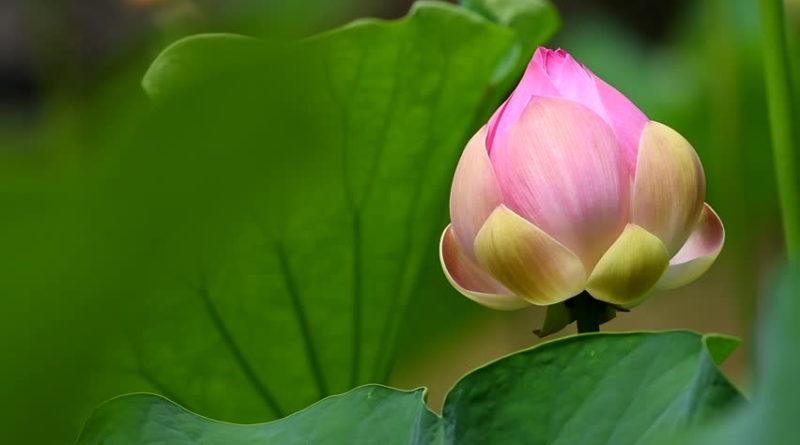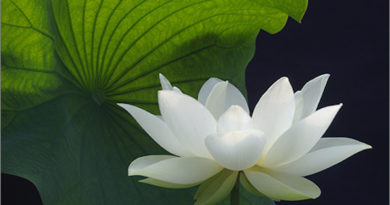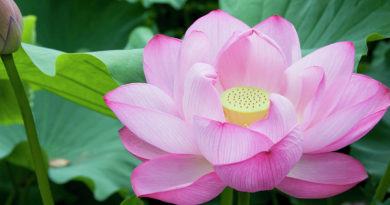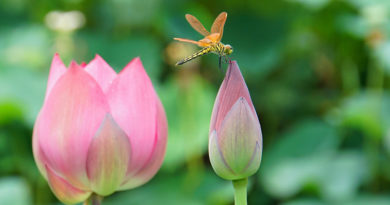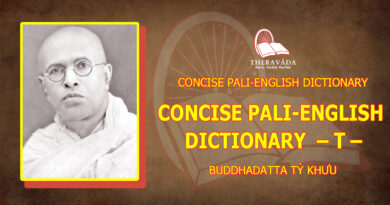FROM CEYLONESE TO SRI LANKAN BUDDHISM
FROM CEYLONESE TO SRI LANKAN BUDDHISM
Ceylonese Buddhism out of the Colonial Period
Ceylonese Buddhism has been in close connection with Ceylonese nationalism throughout Ceylonese history. This connection was even stronger during the British colonial period. Under British rule, the monasteries lacked official status and were unable to defend their land or rights. One report claimed that 800,000 acres of temple property were confiscated. The colonial government and the Christian missionaries took the entire school system out of the hands of the Buddhists. The Buddhists became second-class citizens, while the Christians and the English-educated rose to the best positions in the colonial administration. Only Christian Sundays and feast days and the British national holidays were celebrated in this Buddhist country. There were various anti-colonialist uprisings and prominent Buddhist monks were condemned to death. Threats of religious, national and cultural effacement like these led to the Buddhist revival in Ceylon.
In 2382/1839, [1] a parivena [2] a Buddhist seminary or institution of higher learning, called the Parama-Dhammacetiya Parivena, was founded. Among the important Buddhist leaders produced by this parivena was H. Sri Sumangala Thera. In the years 2415/1872 and 2419/1876 two more parivenas were established, the Vidyodaya in Colombo and the Vidyaalankaara at Kelaniya near Colombo, which were raised to the status of universities in 2502/1959.
Then, the learned Buddhists led by Ven. H. Sri Sumangala Thera and Ven. M. Sri Gundnanda Thera demonstrated their opposition to Western ideas, values and social practices by arranging public disputations with Christian missionaries. In these Buddhist -Christian controversies, the Buddhists considered the utter defeat of Christianity easy and certain, while the Christian missionaries could fairly estimate the difficulties of their position and day by day they had to commend themselves in prayer to God and confide in Him for wisdom and direction at every step.[3]
Reading the account of such a controversy published in the Ceylon Times in 1873, Colonel Henry Steel Olcott, an American Civil War officer, came to know of the Buddhist conditions in Ceylon. Then, in 2423/1880, he came to Ceylon to take part in the defence of Buddhism. He travelled around the country encouraging the people to revive their historic religion reorganized the Buddhist educational system on modern principles and founded the Theosophical Society of Ceylon. Within a few years he opened three colleges and 200 schools, and exercised considerable influence over the younger generation. One of the Young men who came under his influence was David Hewavitharne (mentioned earlier), who later became a great Buddhist leader called Anaagaarika Dharmapaala, the founder of the Maha Bodhi Society (2434/1891) and the Buddhist revival movement in India. The movement initiated by Col. Olcott also adopted a Buddhist flag and succeeded in making the Vesak a public holiday once more.
Meanwhile, in the field of Buddhist studies, some of the British officials, who served in the Civil Service of Ceylon, through their private study and research, developed an appreciation of the Buddhist culture of Ceylon. Among these was Professor T.W. Rhys Davids who later founded the Pali Text Society in London in 2424/1881 and wrote, edited and translated voluminous Buddhist literary works. By rendering the Buddha’s teachings admirable in European eyes, he ‘gave confidence and pride to the peoples who had preserved them’.[4] He has been one of the two Westerners especially revered in Ceylon, the other being Col. Olcott.
Among Ceylonese scholars, it should be noted that lay Buddhists have played no less important a part in Buddhist literary activities than the monks. One of the best known or, probably, the best known, should be Professor G.P. Malalasekera, the compiler of the Dictionary of Pali Proper Names (2480-2481/1937-38) and Editor-in-Chief of the Encyclopaedia of Buddhism, the first fascicule of which was published in 2504/1961. The Encyclopaedia is a work of international collaboration and several regional committees have been set up for the better coordination of the work, the largest of these being the Japanese committee. Smaller committees also function in China, Burma, Thailand, Germany, France, Italy and the Netherlands. Some 2,000 pages of the Encyclopaedia have been published so far.
Among monk-scholars, the following names should be cited: Aggamahaapa.n.dita A.P. Buddhadatta, author of Concise Pali-English Dictionary, English-Pali Dictionary, New Pali Course, etc.; Dr. Vajira~naa.na Mahaathera, writer of Buddhist Meditation; Ven. Naarada Thera, an active Buddhist missionary and voluminous author; Ven. W. Rahula, author of What the Buddha Taught and History of Buddhism in Ceylon. Of no less importance and distinction than these scholars is Ven. Nyanatiloka, a German Buddhist monk of Island Hermitage in Ceylon who wrote Guide Through the Abhidharnma Pitaka, The Word of the Buddha, Buddhist Dictionary and other valuable works in German, English and Pali. Of his pupils, Ven. Nyanaponika, a German monk learned in the Abhidharnma, and Ven. ~Naa.namoli, an English monk with voluminous translated Pali works, are among international Buddhist scholars. In presenting Buddhist teaching and practice to the modern world, these scholars have been active in relating them to modern thought and much attention has been paid to the Abhidharnma and meditation. .
Nationalistic and International Buddhism
After Independence in 1948, the identification between Buddhism and nationalism continued and even led to the politicization of the Ceylonese Sangha. Several factors were accountable for this. Firstly, other religions, Hinduism, Islam and Christianity, were imported to the island by occupying powers during various colonial periods. Secondly, the fact that, by the British constitution, the Queen of England is the head of the Anglican Church and Defender of the Faith, caused in the Buddhists opposition to Ceylon’s constitution of 1946-47. They would ask, “How can the Queen of England be defender both of the Christian and of the Buddhist religions?” Thirdly, religious conflicts during the British colonial period increased in the Ceylonese love of their native culture, stimulated a desire to turn back to a golden past when Ceylon was under Buddhist kings, and thus led to the demand for the reestablishment of Buddhism as the state religion and the planning of educational and cultural policies under the guidance of Buddhist principles. Moreover, the fact that in Ceylon temple lands and monasteries are the private property of the monks who have interests in them may also have some connection with the matter. As a result of the politicization of the Sangha, every politician tries to win the support of the monks and the winners are those who attract the greater number of monks to their cause. Today, monks may be seen actively campaigning for a political party candidate or politicians making speeches with monks at their sides.
This politicization has, however, caused reactions, especially since the assassination of Ceylonese Prime Minister Bandaranaike in 1956. There has been a public demand for the purifying and reforming of the Sangha. Thus, there are trends to put an end to the politicization and secularization of the Ceylonese Sangha, and to restore it to the purely spiritual character of monasticism.
Another trend worthy of interest is the involvement of monks in community development projects and programmes for rural uplift. Organizations and movements have been formed for the participation of monks in various kinds of work for the spiritual and material welfare of the people and for the improvement of the living conditions of the villagers, such as the Sarvodaya Shramadana Movement (organized in 2501/1958) and the Ceylon Farmers’ Association (founded in 2509/1966). This trend can also be seen in other Southeast Asian countries, especially Thailand.
In 2515/1972, Ceylon adopted a new constitution under which the country became a republic and its name was changed to Sri Lanka.
At present, there are three main sects of the Sri Lankan Sangha the largest and oldest, Siam Nikaaya, which is divided into two principal chapters, Malwatta and Asgiriya; the Amarapura Nikaaya, founded in the 19th century with about 20 percent of monk population; and the Raama~n~na Nikaaya, founded by reformist members of the Siam sect. While the former Siam sect derived its ordination from Thailand, the latter two are the recipients of ordination from Burma. There are no fundamental or doctrinal differences between these sects.
Of the population of 15,000,000 (est. 2524/1981), Buddhists make up 67 percent, while, of the rest, 18 percent are Hindu, 8 percent Christians, and 7 percent Muslims. There are almost 6,000 monasteries with about 17,000 monks and 14,000 novices in residence.
Among the Theravada Buddhist countries, Sri Lanka has been the most advanced in modern Buddhist studies. Besides the two monastic parivenas of Vidyodaya [5] and Vidyaalankaara [6] which have been elevated to university status, admitting lay students as well as monks, the older secular University of Sri Lanka offers courses in Pali and Buddhist studies both for the lower and for the advanced degrees to all students, Sri Lankan and foreign, including monks.
Sri Lanka has made great contributions to the progress of international Buddhism. Besides the above-described Maha Bodhi Society, Sri Lanka gave birth to another great international Buddhist organization, that is, the World Fellowship of Buddhists (WFB.) in 2493/1950. Professor Malalesekera who initiated the idea was elected the first president of the organization. Now the organization has its permanent headquarters in Thailand. In addition, until 2518/1975 Sri Lanka had sent abroad a far greater number of Dhammaduutas than any other Buddhist country, except Japan. Sri Lankan monks can be found residing in their vihaaras or residences in London, Washington, West Berlin and other Western cities, as well as in India. The Buddhist Publication Society of Kandy, established in 2501/1958, has regularly published two useful serial publications called ‘The Wheel’ and ‘Bodhi Leaves’, which have enjoyed a world-wide readership. Sri Lanka’s monthly journals such as World Buddhism, meet with increasing numbers of readers in the English-speaking world. So far, as Trevor Ling says in his A History of Religion: East and West, “Ceylon has also played a larger part than any other Buddhist country in making known to some of the non-Buddhist areas of the world the principles and practice of Buddhism.”
Notes:
[1] B.E./C.E. The Buddhist Era as shown here is according to the Thai calendar. To have the one in the Ceylonese calendar, just add one to the present unmber.
[2] Also called pirivena.
[3] Vev. Parsons quoted in Balding’s One Hundred Years in Ceylon, p. 120.
[4] R. H. Robinson, The Buddhist Religion. (Belmont: Dickenson Publishing Co., 1970), p. 108.
[5] At Vidyodaya, there is a fund of 5,000 rupees called “Siyaamaraajatyaaga” donated by King Chulalongkorn (Rama V) of Thailand for granting awards to students who get the highest marks.
[6] From 2509/1966 onwards, admission to Vidyaalankaara.flas been extended to women. In 2510/1967, there were 6 Thai monks and novices taking courses at this University.

